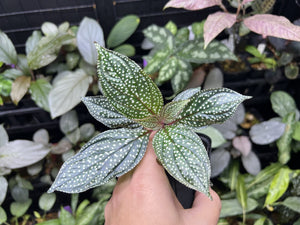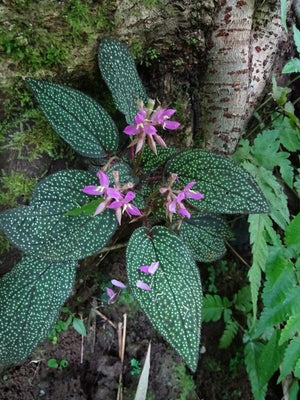ADA Sonerila mamei
R 799.00 – Sold Out
Sonerila mamei, also known as “Sonerila,” “Sonerila Pink,” or “Sonerila Mamei Pink,” is a beautiful and unique tropical plant that belongs to the family Melastomataceae. It is native to the rainforests of Southeast Asia, including countries like Thailand and Malaysia. Sonerila mamei is primarily cultivated for its attractive foliage and is popular in the world of indoor gardening and houseplant enthusiasts.
Sonerila mamei is a small, herbaceous plant with a compact, clumping growth habit. It typically reaches a height of about 6 to 10 inches (15 to 25 centimeters). The leaves are a standout feature, having a velvety texture and a rich, deep pink or purple color on the upper surface. The undersides of the leaves are often green, creating an interesting contrast.
The leaves of Sonerila mamei are broadly elliptical or ovate in shape, and their size can vary depending on the specific cultivar. The pinkish coloration intensifies under good lighting conditions and when the plant is grown in well-draining soil with proper nutrients.
While the foliage is the main attraction of Sonerila mamei, the plant does produce small, delicate, and often inconspicuous white or pink flowers. The flowers appear on long stalks rising above the foliage.
Sonerila mamei can be propagated through stem cuttings. Simply take a healthy stem cutting with a few leaves and root it in water or a well-draining soil mix. Keep the cutting in a warm, humid environment until it establishes roots.
Care tips
- Sonerila mamei prefers bright, indirect light. It does best in a warm and humid environment, with temperatures between 65°F to 80°F (18°C to 27°C). Protect the plant from harsh, direct sunlight, as it can scorch the leaves.
- Provide Sonerila mamei with well-draining soil that retains some moisture but doesn’t become waterlogged. It thrives in a humid environment, so misting the leaves or using a humidity tray can be beneficial. Allow the soil to partially dry out between waterings to prevent root rot
You may also like
Follow
OPENING TIMES
Monday to Thursday : 09h00 - 17h30
Friday : 09h00 - 16h00
Saturday : 09h00 - 13h30
Sunday : 10h00 - 13h00
Public Holidays : 09h00 - 13h00





